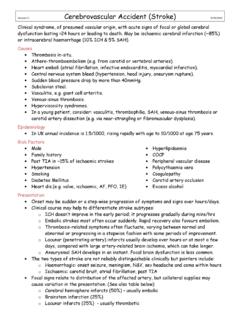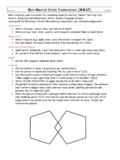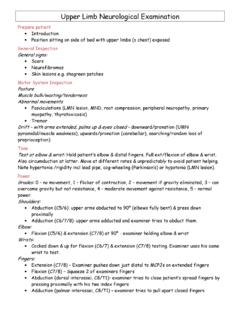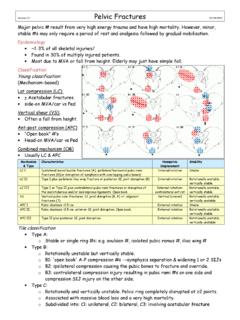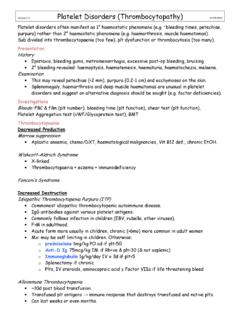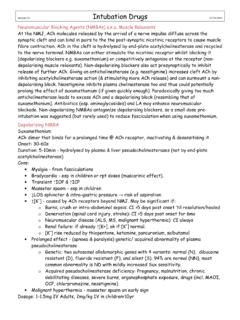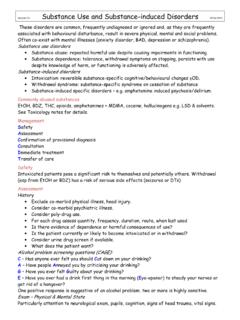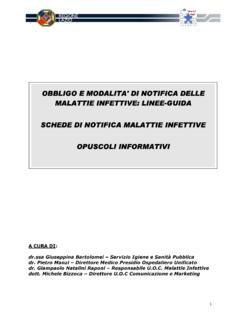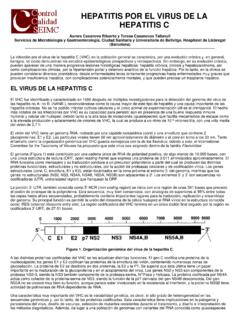Transcription of Acute Blood Transfusion Complications - ambonsall.com
1 Version Acute Blood Transfusion Complications 21/05/2012. Causes Acute haemolytic Transfusion reaction Incompatible transfused RBC react with patient's own ABO antibodies or other RBC. antigen alloantibodies ( anti Rh D, Rh E, Rh c and Kell). C' can be activated and DIC. Usually patient sample mislabelled. 1:3 risk of ABO incompatibility if random RBCs given. Non-ABO red cell antibody haemolytic reactions tend to be less severe but the Kidd and Duffy antigens also activate complement and can cause severe intravascular haemolysis. Infective shock Risk~1:2,000,000. HIV 1, HTLV (10% Aborigine's carry), Parvovirus B19, CMV, Hep A/B/C/NANB, syphilis, malaria, , CJD, Yersinia. Blood screened for HIV, Hep C, CMV. Fluid overload Diuretics may be used if this is a concern.
2 Severe allergic reaction or anaphylaxis To proteins in transfused Blood components. Reduced by pre-washing RBCs (but decreases shelf life to 24hrs). Non-haemolytic febrile reactions to Transfusion of platelets and red cells Fevers due to patient antibodies to transfused white cells. Multiparous women and those who have received previous transfusions are most at risk. Transfusion Related Acute Lung injury(TRALI). Donor Ab to patient leucocytes Severe reaction with fever, non-productive cough and breathlessness. CXR shows multiple perihilar nodules with infiltration of the lower lung fields. Allo-immunisation dev of anti-RhD in RhD- pat receiving RhD+ haemolytic disease of the newborn Graft-vs-Host Disease (GVHD). Transfusion of immunocompetent lymphocytes into immunodepressed patient Prevented by irradiating the Blood first.
3 Immunomodulation Possible tumour recurrence and post-operative infection rates. No clear evidence. Other Complications Citrate toxicity if rapid Transfusion - pH, metallic taste, ? Ca2+. Hyperkalaemia Hypernatraemia from sodium citrate Jaundice (30% RBCs don't survive transfucion). Iron overload Management Assessment: ?shock, fever, pain (infusion site, back, chest). Is there haemolysis, ARF, DIC. (haematuria, puncture site oozing, etc). Mx: Stop Transfusion and recheck patient & Blood product. Assess severity: Mild (T < C, no rash/shock) - recommence at slower rate, Mod (T < C, rash, no shock) give antihistamine + antipyretic & restart after 30min, Severe (shock, haemolysis) - cease Transfusion , resuscitate, and send Blood samples (Coombs, FBC, rpt XM, coags) & Blood product to lab for retesting.
